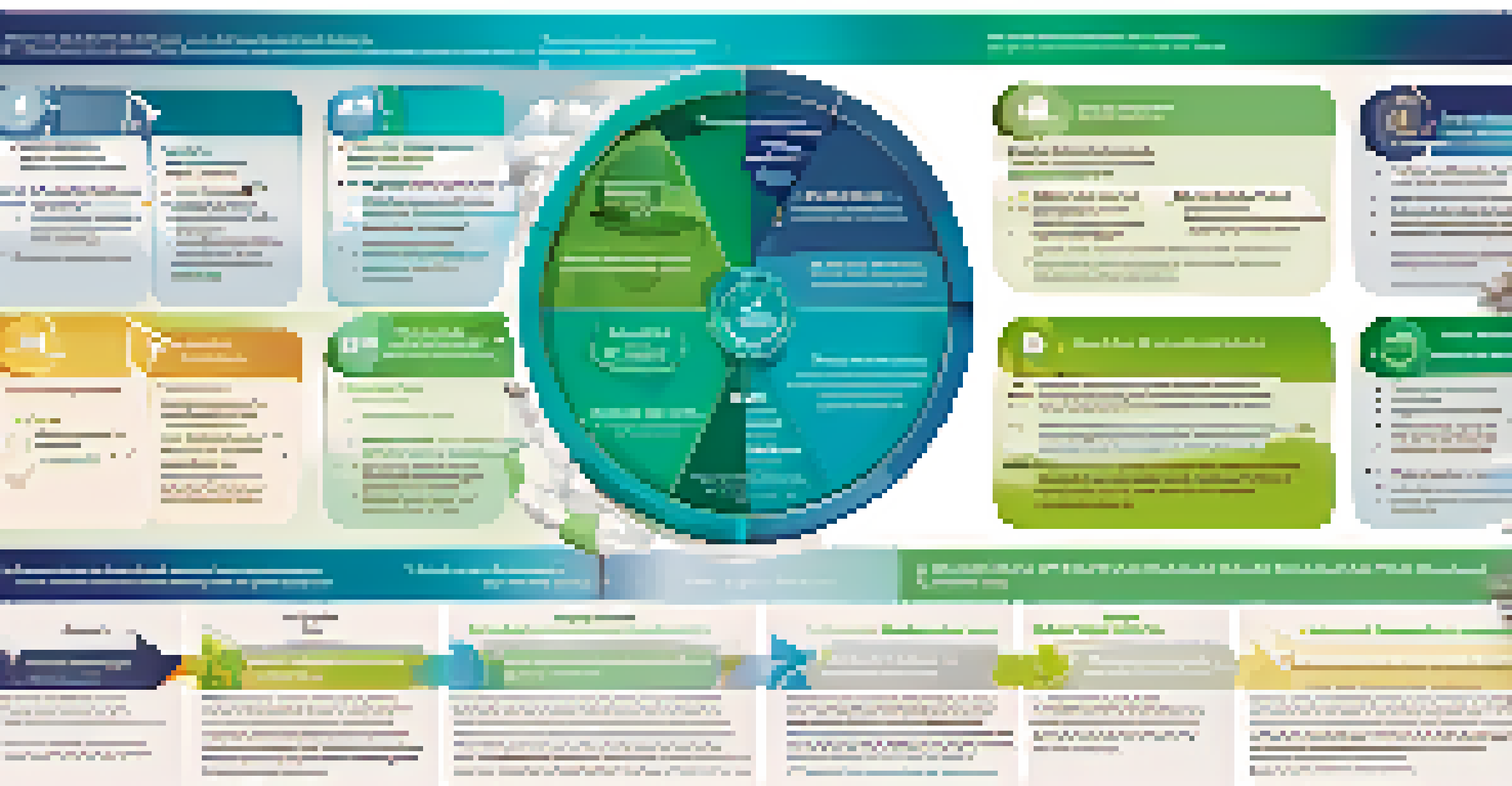The Phases of Clinical Trials: What You Need to Know

Introduction to Clinical Trials and Their Importance
Clinical trials are essential research studies that evaluate new treatments, drugs, or devices. They help ensure that medical innovations are safe and effective for public use. Without clinical trials, we wouldn't have many of the medications and therapies that are standard today.
Clinical trials are the cornerstone of modern medicine, ensuring that new treatments are safe and effective before they reach the public.
The process of clinical trials is structured in phases, each serving a specific purpose. Understanding these phases can provide insight into how new treatments are developed and brought to market. This knowledge is valuable for patients, healthcare professionals, and anyone interested in the medical field.
In this article, we’ll break down each phase of clinical trials, from initial testing to post-marketing evaluations. By the end, you’ll have a clear understanding of what goes on at each stage and why it's crucial for advancing healthcare.
Phase 0: Preliminary Studies and Drug Testing
Phase 0, also known as microdosing studies, is where researchers begin to understand how a drug behaves in the body. This phase involves administering a very small dose to a limited number of participants. The goal is to gather preliminary data on pharmacodynamics and pharmacokinetics without exposing participants to significant risk.

While Phase 0 is not always conducted, it can help determine whether a drug should proceed to further testing. Think of it as a sneak preview of the drug’s potential. It allows scientists to adjust their approach based on early findings before embarking on larger trials.
Phases Ensure Drug Safety and Efficacy
Clinical trials are conducted in structured phases to assess the safety and effectiveness of new treatments before they reach the market.
This phase is crucial for filtering out ineffective drugs early on, saving time and resources. It sets the stage for more extensive studies, ensuring that only promising candidates move forward.
Phase I: Safety and Dosage Trials
Phase I trials focus primarily on safety. In this phase, a small group of healthy volunteers, usually between 20 to 100, is given the drug to assess its safety, determine a safe dosage range, and identify side effects. This is a critical step in ensuring that the treatment is not only effective but also safe for human use.
Ethics in clinical trials is not just a requirement; it's a commitment to the safety and rights of participants.
During Phase I, researchers closely monitor participants for any adverse reactions. It’s like testing a new recipe at a small dinner party before serving it to a crowd. If the dish is too spicy or bland, adjustments can be made.
The outcomes of Phase I trials lay the groundwork for Phase II, providing essential information on how the drug behaves in the human body and its potential therapeutic window.
Phase II: Efficacy and Side Effects Evaluation
In Phase II, the focus shifts to evaluating the drug's efficacy and monitoring its side effects in a larger group of people, usually between 100 and 300 participants. This phase is when researchers start to see how well the treatment works for the condition it's targeting.
Think of Phase II as a more extensive taste test with a larger group. Researchers gather data on how effective the drug is at different dosages and begin to identify potential side effects. This helps in refining the dosage for future studies.
Ethics Protect Trial Participants
Ethical considerations and informed consent are critical to maintaining participant safety and trust throughout the clinical trial process.
The results from Phase II trials are crucial in deciding whether the drug should proceed to Phase III, where it will be tested on an even larger scale.
Phase III: Large Scale Trials for Confirmation
Phase III is where the rubber meets the road. This phase involves hundreds to thousands of participants and is designed to confirm the drug’s effectiveness, monitor side effects, and compare it to commonly used treatments. It’s the most extensive and time-consuming phase of clinical trials.
During this phase, researchers gather comprehensive data that will inform regulatory agencies about the drug's safety and efficacy. It’s akin to a large-scale public opinion poll where the goal is to see if the initial findings hold true for a broader audience.
If successful, Phase III results are used to apply for regulatory approval, allowing the drug to be marketed and made available to the public.
Phase IV: Post-Marketing Surveillance
Phase IV trials occur after a drug has been approved and is on the market. This phase focuses on long-term effectiveness and the impact of the drug on a larger population. Researchers continue to monitor the drug for any rare side effects or long-term consequences that may not have appeared in earlier phases.
This phase is crucial because it helps ensure ongoing safety and efficacy. Think of it as a quality control check after the product has hit the shelves. It allows for real-world data collection as the drug is used by a diverse population.
Long Journey from Lab to Market
The development of new drugs involves a complex and lengthy process, often taking years, to ensure patient safety and treatment effectiveness.
Phase IV studies can lead to further recommendations about the drug, including dosage adjustments or identifying new uses for the treatment.
The Importance of Ethical Considerations in Trials
Ethics play a significant role in all phases of clinical trials. Researchers must ensure that participants are fully informed about the study's purpose, procedures, risks, and benefits. Informed consent is a cornerstone of ethical research, ensuring that participants voluntarily agree to participate.
Moreover, ethical oversight is provided by Institutional Review Boards (IRBs), which monitor trials to protect participants' rights and welfare. This oversight is essential to maintain public trust in clinical research.

Ultimately, ethical considerations ensure that the pursuit of knowledge does not come at the expense of participant safety, making trials not only scientific endeavors but also moral ones.
Conclusion: The Journey from Lab to Market
Understanding the phases of clinical trials demystifies the drug development process. Each phase is designed to address specific questions about safety and efficacy, ensuring that only the best treatments reach patients. This rigorous process is what underpins modern medicine and contributes to public health.
The journey from lab research to market can be long and complex, often taking years or even decades. However, this thorough approach is essential for protecting patient safety and ensuring that new therapies are effective.
As we look to the future, ongoing innovation in clinical trial design and technology promises to continue improving how we develop and test new treatments, ultimately benefiting patients worldwide.